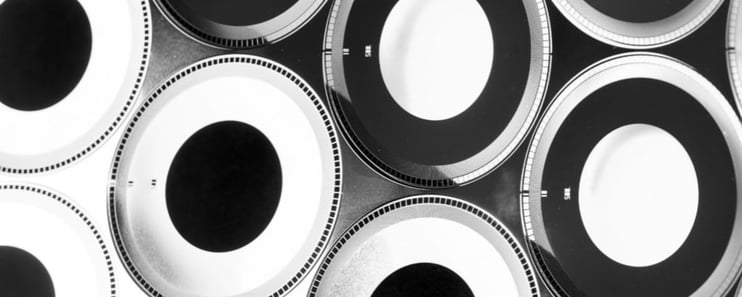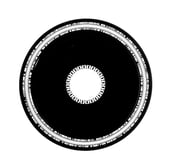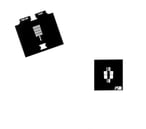Encoder discs: should engineers use Mylar, glass, or metal?
Dec 5, 2016 1:34:59 PM By Maarten NijlandDo you know that there are several techniques for the production of optical encoder discs that you can utilize as an engineer? And that each of these techniques results in different properties for your encoder discs? It’s important to know what properties are optimal for the type of optical encoder discs you require. This blog post explains the differences among the common manufacturing techniques and/or materials for encoder discs, and helps you select the right one.
Optical encoder discs made from Mylar
¹Mylar is a plastic material and can be described as stretched polyester film. Mylar is actually a brand name for this stretched polyester material. The chemical description for Mylar is biaxially-oriented polyethylene terephthalate (BoPET). It is created by extruding molten polyethylene terephthalate (PET) as a thin film on a chilled surface, drawing that film biaxially, and heat-setting the film by holding it under tension.
Mylar possesses properties that make it useful for several applications, such as optical encoders. It possesses chemical stability, for instance. And because it’s plastic, the production costs are relatively low.
The downside of Mylar is that it isn’t very resistant to heat. Temperatures of 70˚+ cause the material to deteriorate, so if you require optical encoder discs that should tolerate higher temperatures, you shouldn’t opt for Mylar.
Optical encoder discs made from glass
One of the latest materials for the production of encoders discs is glass. Glass encoder discs have the following advantages:
- Resistance: glass encoder discs can stand high operating temperature
- Resolution: glass encoder discs feature very high resolutions
- Accuracy: glass encoder discs have very high accuracy
While glass is a common choice for the production of encoders discs, it also comes with disadvantages:
- Price: glass encoder discs are much more expensive than metal and Mylar ones
- Thickness: glass encoder discs are thicker compared to those made of other materials
- Fragile: glass encoder discs cannot tolerate (heavy) convulsions
- Positioning: it takes extra process time to align glass encoder discs properly
So, if your applications require encoders discs that are cost efficient and can tolerate convulsions, you shouldn’t opt for glass encoder discs.




(Electroformed) metal optical encoder discs
A particularly interesting technology for the production of encoder discs is electroforming, an additive manufacturing method that produces high-precision metal parts. Metal encoder discs created through electroforming have desirable properties. With the latest improvements in additive manufacturing techniques and photosensitive lacquer, a higher aspect ratio can be met. To improve the discs’ stability and durability, multi-layering is also an option.
Advantages of electroformed metal encoder discs:
- Price: electroformed metal encoder discs are more cost efficient than glass encoder discs;
- Time-saving in production: an electroformed encoder disc can easily be mounted on the encoder;
- Resolution: electroformed encoder discs feature very high resolution;
- Compatibility: encoder discs for multiple types of encoders — rotary, linear , etc.— can be electroformed;
- Resistance to corrosion, abrasion, and high temperatures(120˚);
- Thickness: electroformed encoder discs are thinner compared to glass ones;
- Stress-free and burr-free;
- Positioning: electroformed encoder discs can self adjust and ensures very stable disc mounting
Mylar vs. glass vs. metal: what type of optical encoder disc should you choose?
When your encoder discs don’t need to be that strong or resistant to high temperatures — but do need to be cheap — you could opt for Mylar encoder discs. In most cases, though, the applications you need your encoders discs for require more resistant properties. You will almost always be choosing between glass and metal encoder discs:
Glass encoder discs are slightly more resistant to higher temperatures, smaller in size, and have a more accurate positioning of the central hole.
Electroformed metal encoder discs are cheaper, less time-consuming in production, highly resistant to corrosion and abrasion, and stress-free and burr-free. Electroformed metal encoder discs also have a higher resolution.
If you would like to learn more about the creation of high-precision metals through electroforming — and how the technique can drive innovation for your business — you should read our free electroforming whitepaper:

